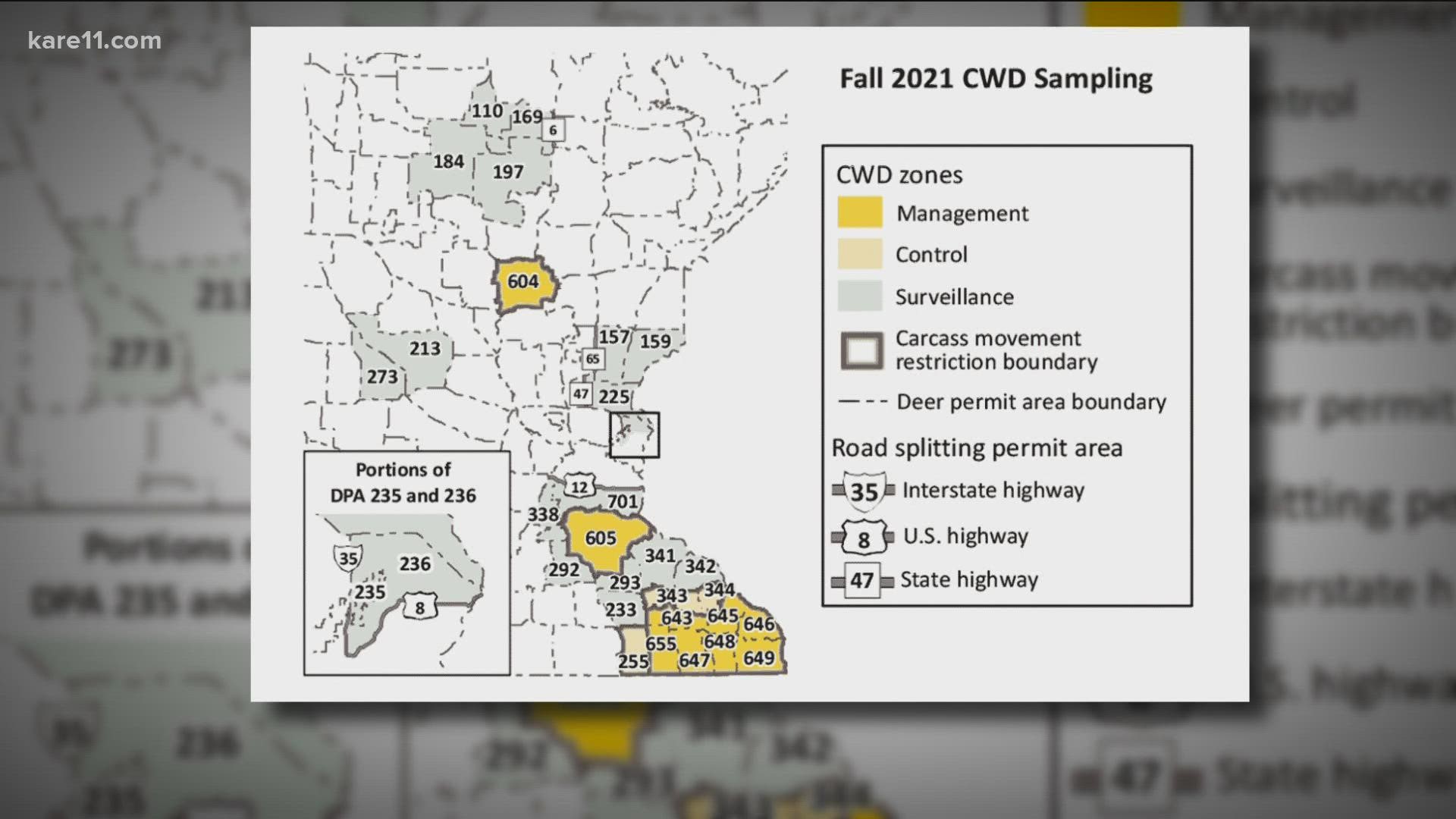MINNEAPOLIS — Saturday's sun will rise on the first day of the firearms deer hunting season in Minnesota, and this year hunters will have something new to watch for in the field: chronic wasting disease, or CWD.
On opening weekends, starting Saturday with the A season and continuing on the B season opener the weekend of Nov. 20, hunters are required to bring any deer older than one year that was killed within a CWD zone to a DNR site for testing.
Voluntary sampling stations will be open outside of the opening weekends within the CWD zones.
The DNR has also put movement restrictions into place, meaning that in areas where CWD has been found, the whole carcasses of deer, including fawns, must stay within those zones until a “not detected” CWD test result is received.
Dumpsters will be provided for hunters to dispose of the heads and spines of the deer following quartering or butchering, so the animals can be removed from the area immediately.
More information is available on the Minnesota DNR's CWD information website.
“Hunters are the most important aspect of keeping disease prevalence low,” Todd Froberg, acting big game program coordinator with the DNR told KARE earlier this week. “The majority of our deer are shot on opening weekend. So, we can get a good number of samples and get an idea of distribution and prevalence of the disease and landscape in those areas.”
Chronic wasting disease is a neurological disorder caused by cancer-like, abnormal proteins called prions that attack the brains of deer, both in captivity and in the wild.
Three cases of CWD were found in the state this year, putting the department of natural resources on high alert, as the disease is very contagious. A temporary ban was placed on bringing farmed deer into Minnesota earlier this fall.
“This disease poses a clear, immediate and serious threat to Minnesota’s wild deer, and these actions reflect what’s at stake,” said DNR Commissioner Sarah Strommen at the time the ban was enacted. “We are committed to doing everything we can to reduce the continued risk of CWD transmission in Minnesota, including from farmed deer to Minnesota’s wild whitetails.”
For more information about the Nov. 6 firearms opener and the steps the DNR is taking to control CWD, visit their website here.

